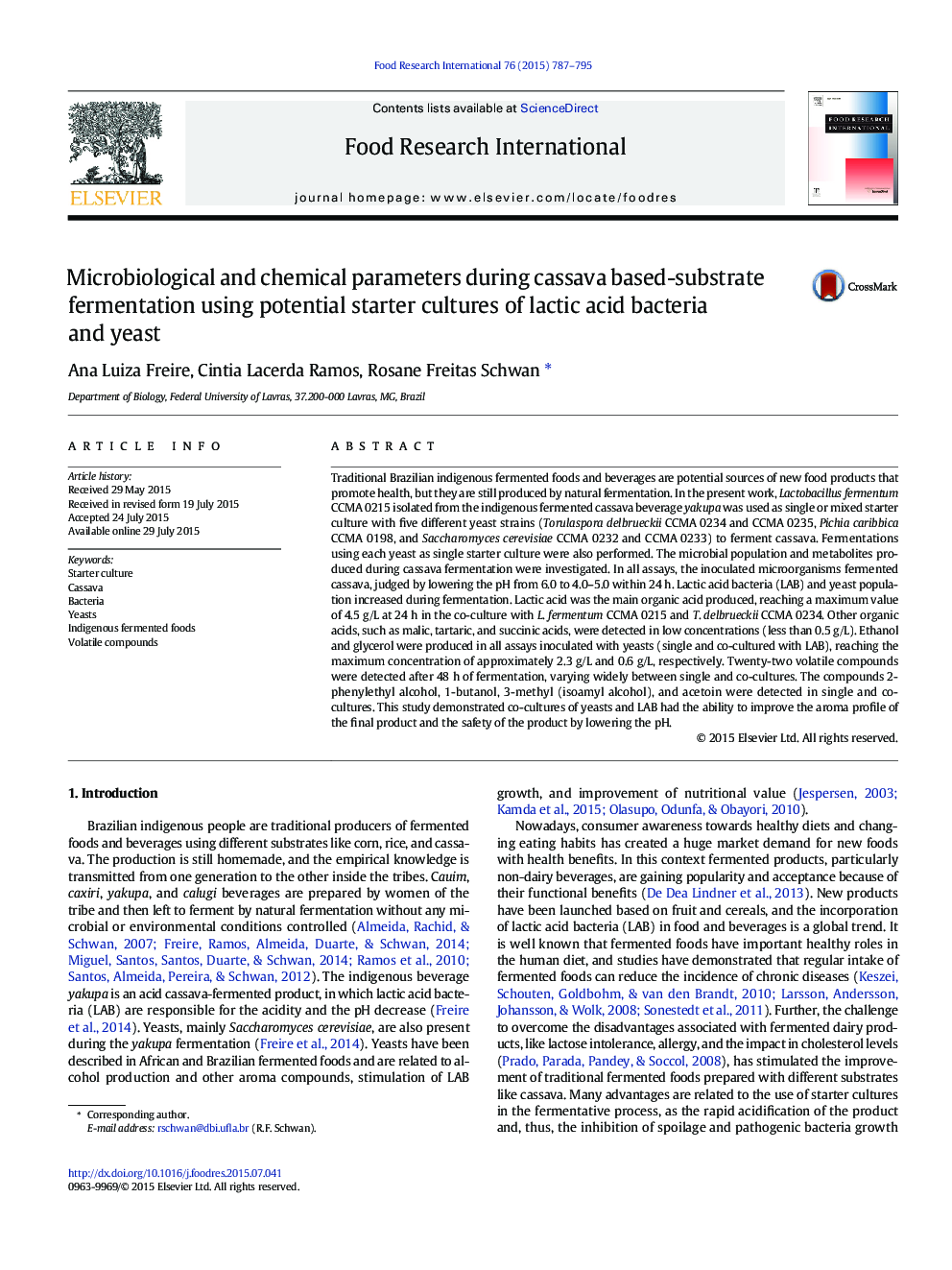| کد مقاله | کد نشریه | سال انتشار | مقاله انگلیسی | نسخه تمام متن |
|---|---|---|---|---|
| 6395255 | 1330649 | 2015 | 9 صفحه PDF | دانلود رایگان |
- Yeasts and LAB were able to ferment cassava.
- Co-cultures may be potential starter cultures for cassava substrate.
- Lactic acid was the main organic acid produced.
- Volatile compounds were mainly produced by yeasts.
Traditional Brazilian indigenous fermented foods and beverages are potential sources of new food products that promote health, but they are still produced by natural fermentation. In the present work, Lactobacillus fermentum CCMA 0215 isolated from the indigenous fermented cassava beverage yakupa was used as single or mixed starter culture with five different yeast strains (Torulaspora delbrueckii CCMA 0234 and CCMA 0235, Pichia caribbica CCMA 0198, and Saccharomyces cerevisiae CCMA 0232 and CCMA 0233) to ferment cassava. Fermentations using each yeast as single starter culture were also performed. The microbial population and metabolites produced during cassava fermentation were investigated. In all assays, the inoculated microorganisms fermented cassava, judged by lowering the pH from 6.0 to 4.0-5.0 within 24Â h. Lactic acid bacteria (LAB) and yeast population increased during fermentation. Lactic acid was the main organic acid produced, reaching a maximum value of 4.5Â g/L at 24Â h in the co-culture with L. fermentum CCMA 0215 and T. delbrueckii CCMA 0234. Other organic acids, such as malic, tartaric, and succinic acids, were detected in low concentrations (less than 0.5Â g/L). Ethanol and glycerol were produced in all assays inoculated with yeasts (single and co-cultured with LAB), reaching the maximum concentration of approximately 2.3Â g/L and 0.6Â g/L, respectively. Twenty-two volatile compounds were detected after 48Â h of fermentation, varying widely between single and co-cultures. The compounds 2-phenylethyl alcohol, 1-butanol, 3-methyl (isoamyl alcohol), and acetoin were detected in single and co-cultures. This study demonstrated co-cultures of yeasts and LAB had the ability to improve the aroma profile of the final product and the safety of the product by lowering the pH.
Journal: Food Research International - Volume 76, Part 3, October 2015, Pages 787-795
